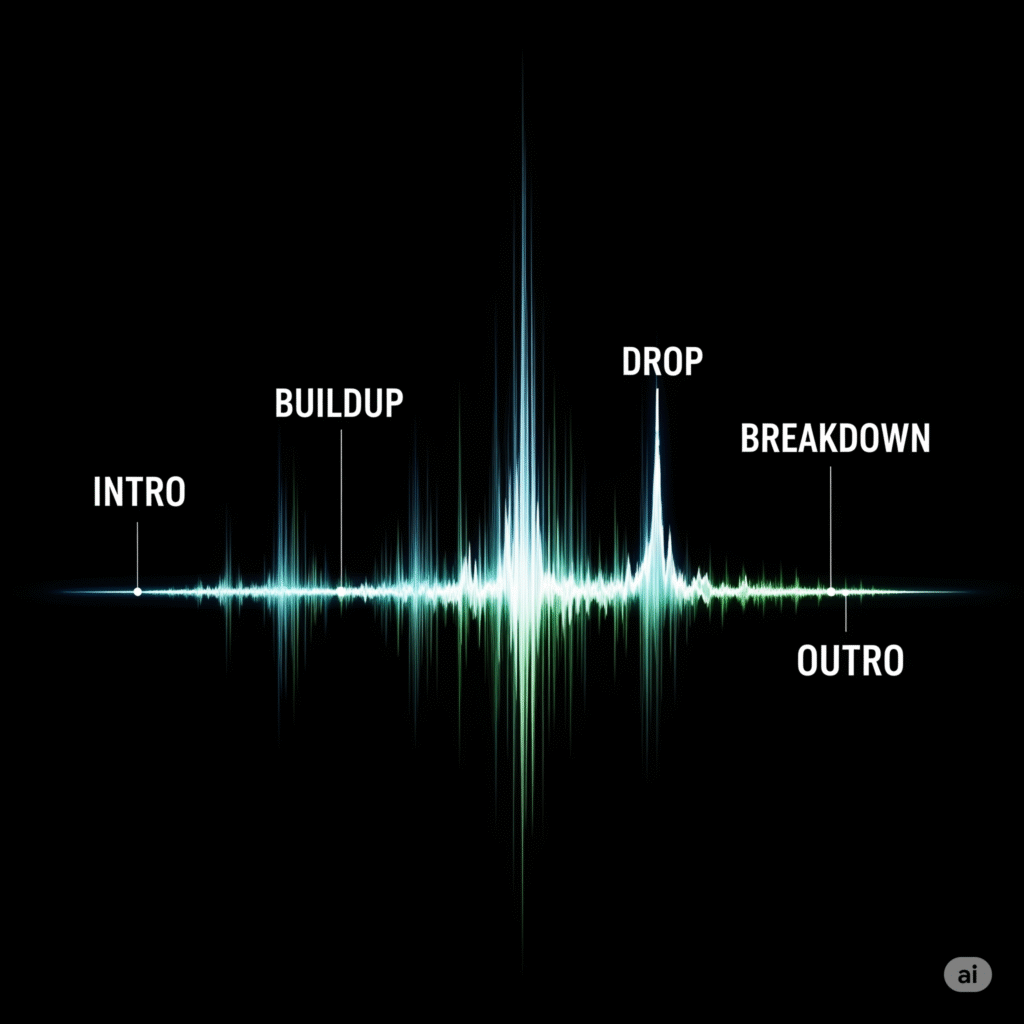The Ultimate Guide to Techno Track Structure

Welcome to the backbone of every compelling techno banger: its structure. For any producer, understanding the techno track structure is not just a technical skill; it’s the art of storytelling. It’s how you build tension, create unforgettable moments, and take the listener on a journey. Whether you’re a seasoned producer or just starting, mastering the arrangement is key to creating professional-sounding tracks that resonate on the dancefloor. “The classic Berlin techno sound often relies on a longer, more hypnotic structure, while the Detroit sound might introduce melodic elements earlier on.”
What is Techno Track Structure?
At its core, a techno track structure is the arrangement of different sections of a song over a timeline. It’s the framework that holds your creative ideas together. Unlike commercial pop music, techno often features a more fluid and evolving structure, designed for seamless mixing by DJs and for creating a hypnotic, immersive experience for the listener. A well-thought-out structure ensures your track has energy, flow, and impact.
The Core Elements of a Techno Track
While there’s no single rigid formula, most techno tracks are built around a set of common elements. Let’s break them down.
The Intro
The introduction sets the mood and provides a mixable entry point for DJs. It typically starts with minimal elements—often just a kick drum and some percussion or a subtle atmospheric pad. The goal is to establish the groove and key of the track without giving everything away at once. A standard techno intro is often 16 to 32 bars long.
The Buildup
This is where you start to build energy and tension. New elements are gradually introduced: a bassline, hi-hats, subtle synth stabs, or rhythmic textures. Filters (like a high-pass filter sweep) and automation are your best friends here, creating a sense of anticipation that something big is about to happen.
The Drop (or Climax)
This is the moment everyone has been waiting for. The drop is the most energetic part of the track, where the core melodic or rhythmic hook is fully unleashed. All the tension built up previously is released in a powerful wave of sound. The kick drum hits hard, the bassline drives the track forward, and the main synth or percussive elements take center stage.
The Main Section
Following the first drop, the main section is the body of your track. Here, you develop your core ideas, introducing variations to keep the listener engaged. This part can have its own smaller buildups and mini-breakdowns, creating a dynamic “call and response” within the track itself. It’s the longest part of the song, where the hypnotic groove is fully established.
The Breakdown
After a period of high energy, the breakdown provides a necessary breather. It strips away most of the rhythmic elements, often leaving behind atmospheric pads, a melodic sequence, or just a filtered kick. This section serves two purposes: it creates a dramatic contrast and builds anticipation for the re-introduction of the beat, often leading into a second, more powerful drop.
The Outro
The outro is the mirror image of the intro. It gradually deconstructs the track, removing elements one by one until only a basic beat or atmospheric sound remains. This provides a smooth, mixable exit point for DJs, allowing them to seamlessly transition into the next track in their set. A typical outro is also 16 to 32 bars long.
Advanced Arrangement Tips for Producers
- Think in Blocks: Arrange your track in 8 or 16-bar sections. This makes it easier to structure and keeps your track DJ-friendly.
- Subtraction is Powerful: Sometimes, the best way to create impact is by taking elements away (like in a breakdown) rather than adding more.
- Use Automation: Automate filters, volume, reverb, and delay to bring your track to life. A static track is a boring track.
- Reference Tracks: Listen to your favorite techno tracks and analyze their structure. How long is the intro? When does the bassline come in? This is a fantastic way to learn from the pros.
By mastering the techno track structure, you gain control over the energy and emotion of your music. Now, open your DAW and start building your next dancefloor weapon.

